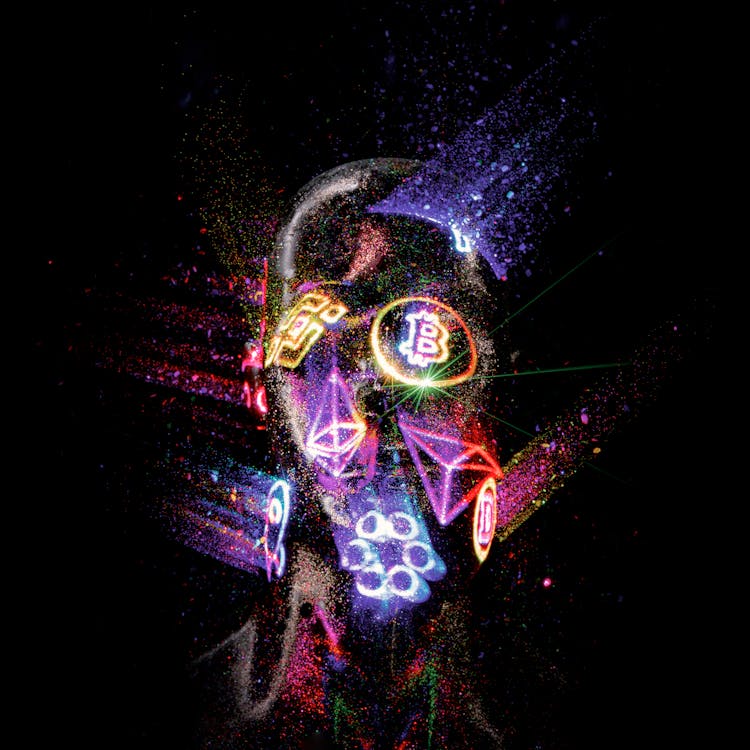TL;DR:
- Educators can help students navigate the world of Web 3, the metaverse, and NFTs.
- By educating ourselves about these technologies, we can provide opportunities for student interactions with these virtual worlds.
A few weeks ago I listened to Gary Vaynerchuk (Gary Vee) being interviewed about the future in relation to NFTs. He was not only discussing NFTs but where the world is heading in relation to the ownership of digital assets. As I’ve been exploring NFTs, I’ve begun to look into learning as much as I can about Web 3 and metaverse.
I’m most interested in ethics and how this new world of metaverse and digital community impacts education. Before exploring the implications and how this affects education, one must understand what each of these are, how they came about, and where the future is going.
Currently, I have more questions than answers, but here are a few of my initial discoveries for educators as they dive into the world of Web 3.0, the metaverse, and NFTs.
What is Web 3.0?
Looking back at previous iterations of the internet, Web 1.0 focused mostly on the sharing of knowledge and information. Web 2.0 focused on connection and making transactions. Social networking and large corporations dominated the landscape of Web 2.0.
One word comes to the top of the list when discussing and defining Web 3.0: decentralized. According to Gemini.com, Web 3.0 represents a paradigm shift for the internet—towards a decentralized, user-focused, and immersive online experience (2021).
As educators, we can bring Web 3.0 into our classrooms by exploring and preparing our students by experimenting with artificial intelligence, virtual and augmented reality, and designing worlds in Minecraft and Roblox.
I’m most interested in ethics and how this new world of metaverse and digital community impacts education. Share on XWhat is the Metaverse?
Investopedia defines the metaverse as a digital reality that combines aspects of social media, online gaming, augmented reality (AR), virtual reality (VR), and cryptocurrencies to allow users to interact virtually (Folger, 2021).
In October, Facebook announced their entrance into the metaverse by introducing Meta. Other entities currently dominating marketspace in Web 2.0 like Epic Games, Microsoft, and Apple are beginning to invest and make their mark on the metaverse and Web 3.0 (D’Anastasio). It will be interesting to see how the decentralized focus of Web 3 intersects or affects how successful companies in Web 2.0 operate.
The Metaverse for Education newsletter is a bi-monthly for educators, by educators, a bridge from the real world to the advancements of Web 3 and the metaverse, specifically contextualized for education. This newsletter is informative and links to some great resources as you begin your journey into the metaverse. Check out the precursor to the Eduverse at K20 Educators.
[scroll down to keep reading]What are NFTs?
NFTs are non-fungible tokens that have a unique identifier recorded on the blockchain. The blockchain certifies not only ownership of the token, but its authenticity. These digital assets, or tokens, can be images, art, and physical assets transferred.
NFTs can provide students the opportunity to not only create art, but trade and sell art. Michael Cohen (@TheTechRabbi) recently wrote about NFTs and how educators can empower their students to create. Cohen states, “NFTs are a moment for our students to understand the art of storytelling, character development, and the power of cohesive collections of art. This leads to much more than making great art, but strengthens skills in writing, research, planning, and analysis (Cohen, 2021).”
This may be the first time you’ve heard of Web 3.0, the metaverse, and NFTs. While there has been talk for years, technologies are now making it possible. As I continue my learning journey, I hope to continue to share insight and explorations into this new “Wild Wild West” of virtual worlds.
Sources:
Allyn, Bobby. “People Are Talking about Web3. Is It the Internet of the Future or Just a
Buzzword?” NPR, NPR, 21 Nov. 2021,
https://www.npr.org/2021/11/21/1056988346/web3-internet-jargon-or-future-vision
Cohen, Michael. “What’s the Point of NFTS and Other Questions We Are Asking Ourselves.”
D’Anastasio, Cecilia. “The Metaverse Is Simply Big Tech, but Bigger.” Wired, Conde Nast, 4 Nov.
2021, https://www.wired.com/story/big-tech-metaverse-internet-consolidation-business
Folger, Jean. “Metaverse.” Investopedia, Investopedia, 16 Nov. 2021,
https://www.investopedia.com/metaverse-definition-5206578
The Tech Rabbi, 16 Dec. 2021, https://www.thetechrabbi.com/blog/whats-the-point-of-nfts-and-other-questions-we-are-asking-ourselves
“Web 3.0 Features: A Decentralized and Open Internet.” Gemini, 11 Aug. 2021,
https://www.gemini.com/cryptopedia/web-3-0-definition-open-internet-decentralized
About Jeremy Rinkel
Jeremy is an instructional coach at Vandalia CUSD #203 in Vandalia, IL. He has earned a Masters in Educational Policy from the University of Illinois and a Masters in Teaching from Greenville University. His goal is to inspire students, teachers and anyone he comes into contact with to be a lifelong learner. Jeremy believes education is the key to solving our world’s problems. In his free time, Jeremy enjoys traveling, writing, spending time in coffee shops, and spending time with his family watching old TV shows on Netflix.






